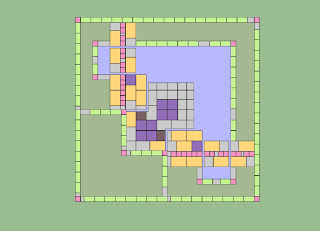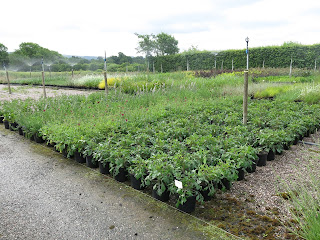Natural Paving, who are kindly donating the paving,
are now discontinuing the Oyster Travertine that we were going to use. As there
is no point showcasing a paving product that no-one will be able to get hold of
after the show we need to look at something else. It’s back to the drawing
board. The best option is their contemporary Cornsilk sawn sandstone which has
a lightly textured surface coloured with ‘beautiful hues of pale cream and
milky coffee, with hints of delicate orange’, or so the brochure says! The
flagstones are machine cut to give a contemporary smooth ‘squared edge’ look
and as they are suitably pale, will work well as a neutral background to the exuberant
planting.
There will be no further changes - the paving is now on order!
I’ve been using my newfound skills in
SketchUp, a Computer Aided Design package, to work out a paving layout. This is so the
guys from Greenbelt Landscape can get straight down to laying the
flagstones when they get to site. They won’t need to waste any time working out
which size goes where, a great help as they only have 16 days in which to build
and plant the garden. However, it’s not as easy as it sounds. When I make a
simple change in one area, it messes up the pattern in another.
I discuss it
with Eliot and he takes over with simple pencil and paper. In less than half
the time I took faffing about on the computer, he creates a layout that works. It
just goes to show that old school can still be the best!















